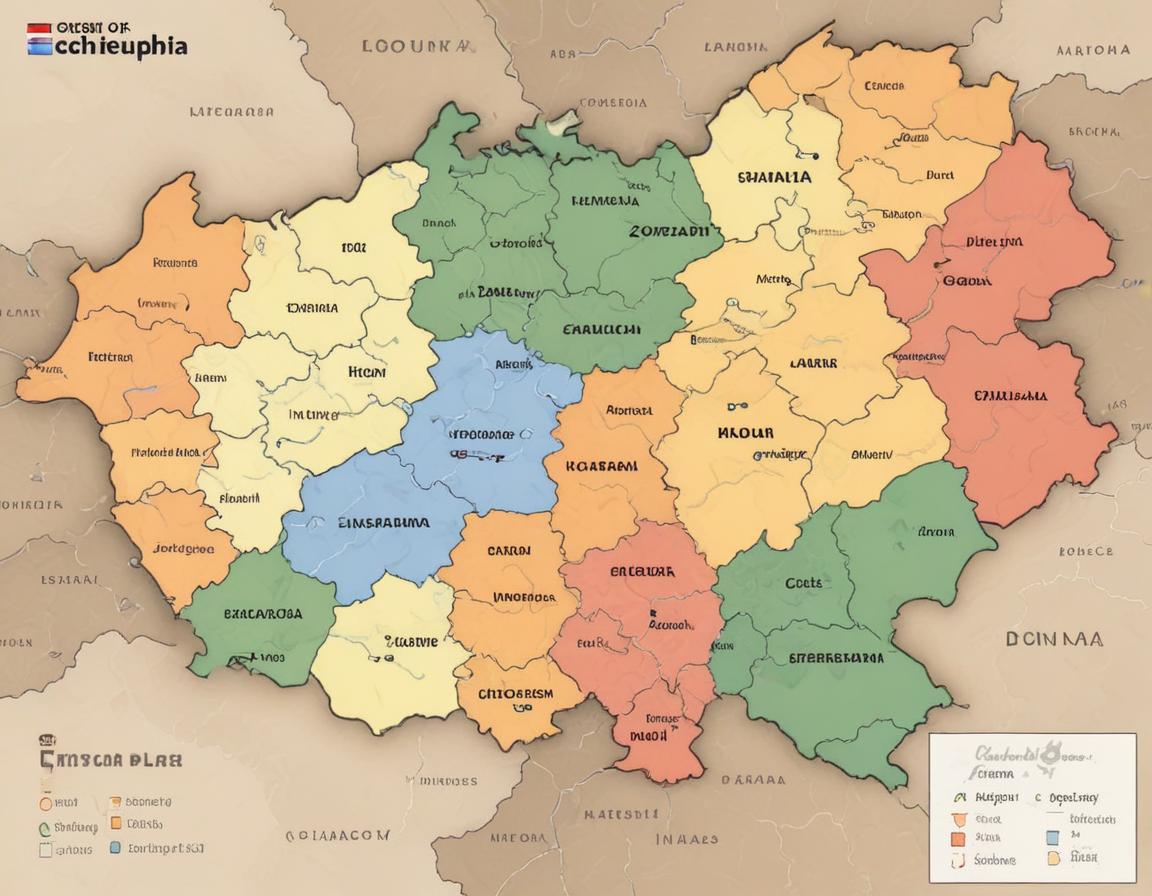Health
Map of Czech Republic: The Complete Guide

Map of Czech Republic, also known as Czechia, is a landlocked country in Central Europe, renowned for its rich history, cultural heritage, and diverse landscapes. Understanding its geography through detailed maps is essential for travelers, students, and geography enthusiasts. This comprehensive guide delves into various aspects of Czechia’s geography, providing insights into its physical features, administrative divisions, major cities, and tourist attractions.
Physical Geography of the Czech Republic
The features of landscape influence the territory of Czechia, including rolling hills, mountains and river valleys. The country is mostly located in the Bohemian Massif, a large Devonian rock formation in Central Europe. Bohemia, the western part of the nation is surrounded by the Ore Mountains to the northwest and the Krkonose Mountains, part of the Sudetes to the northeast and the Bohemian-Wald or Šumava to the southwest. These highlands are relieved by tracts of level country and inland drainage – the affluents of the rivers Elbe (Labe) and Vltava dominate the inland drainage of the country.
On the contrary, the northeast area, Moravia is engraved by, Moravian-Silesian Beskids and White Carpathians and the immense Morava River that determined agricultural and settlement patterns. The varied terrain has a rich impact on the climate and is characterized by oceanic and continental climates, mid-summer heat, and heavy snow in winter. This has resulted in a good great deal of variation in elevation and climate , and thus the country boasts of high level of diversity of species of wildlife and plants, making it a preferred place for those fond of nature activities.
Administrative Divisions and Regions
The Czech Republic comprises 14 administrative districts starting with the word region, although the official English translation is district, and each region has its own capital and bureaucracy. These regions are also divided into districts or okresy and municipalities. The parts are the capital city of Prague (Praha), Central Bohemian Region (Středočeský kraj), South Bohemian Region (Jihočeský kraj) and others that make up the cultural and economic fabric of the country.
Knowledge of these divisions is important when explaining the structure of governance in this and any other country, as well as cultural differences between regions. For example, Prague is political, cultural and economic capital of Czech, on the other hand South Moravia is famous for wines and historic places. This is overshadowed by a range of detailed administrative maps that offer a view into administrative, population, and specific regional differentiation, which is always valuable for research, as well as for traveling.
Major Cities and Urban Centers
The major cities of Czechia share the general characteristics of other Central European postsocialist cities but also possess unique stories and continuities. Czech Republic has cities like Prague that boasts a medieval structure, booming arts industry and; important establishments such as the Charles Bridge and the castle.
The second largest city of Brno is an influential educational and technological city with a number of universities and high-tech companies. The second one is Operational Competitiveness, where the seventh player – Ostrava, situated in the northeast of the country, is orientated to industry and mining. The biggest city in western Bohemia is Пльзен, which has the world’s claim to the origin of Pilsner beer.
These urban centers’ maps are important to understanding the geographic spread of the population density, economic and cultural areas. It helps travelers by guiding them, and it also offers information about the evolution process of these cities. For instance, the design of the city of Prague’s Old Town is medieval while that of Brno is representative of the 20th century. These maps also indicate communication systems such as roads and tracks in the country, making transport management simple for use within the country.
Tourist Attractions and Natural Landmarks
The Czech Republic, as a tourist destination, offers a formidable list of confirmed sites of interest, including castles and parks. Important and well-known features include the Baroque town of Český Krumlov, which is also a UNESCO heritage site and has a great castle; Karlštejn Castle in the Gothic style near Prague; and the healing spas of Karlovy Vary built in fine neo-classical style and belonging to one of Europe’s oldest spa traditions. Tourism products include natural geographic sites like the Bohemian Paradise – major sandy rock formations, Moravian Karst which boasts of many caves and gorges.
Such maps are the cornerstone of tourist information which locates and identifies all these places and their availability for tourists. It normally provides information about hiking trails, cultural activities & festivals, and places to stay, furthering the travel experience. For example, a map of the Bohemian Paradise would indicate the positions of numerous rocks and castles and suggest appropriate trails for hiking.
Transportation Networks
Czechia has a fairly well-established network of transport links within and between regions allowing domestic and foreign travel. The country has a well developed network of highways and roads. The D1 motorway runs from Prague to Brno and is used for both business and everyday travel. The railway transport is also well developed, and routes from Prague’s main railway station extend to other cities such as Ostrava, Plzeň as well as international stations. InterCity transportation is good, while public transport (Metro, trams, and buses) within cities is convenient, especially within Prague.
Transport maps are invaluable to this network as they provide a bird’s eye view of the routes, stations, and interconnections. They help one to plot itineraries, analyze routes of transport, and even guess how many hours a journey would take. For instance, a map of Prague Metro includes three lines (A, B, and C), and each of them is illustrated with its stations and intersections, trams, and buses that will help to plan a trip within the city.
Historical Evolution of Map of Czech Republic
The cartographic history of the Czech Republic reflects its complex past and evolving territorial boundaries. Early maps from the medieval period depict the Kingdom of Bohemia as a significant entity in Central Europe. During the Austro Hungarian era, maps illustrate the integration of Czech lands into the larger empire, highlighting administrative divisions and infrastructure. Post World War I maps show the formation of Czechoslovakia, while later editions reflect the separation into the Czech Republic and Slovakia in 1993.

-

 Life Style10 months ago
Life Style10 months agoWho is Amra Nor Jenkins? The Untold Story About Jeezy’s Daughter
-

 Celebrity5 months ago
Celebrity5 months agoThe Private World of Marina Pearl LeBlanc, Matt LeBlanc’s Only Child
-

 Entertainment10 months ago
Entertainment10 months agoWhat is Shoujo Ramune? The Comprehensive Guide
-

 Celebrity11 months ago
Celebrity11 months agoThe Untold Truth of William Mapel: A Deep Dive into His Personal Life
-

 News11 months ago
News11 months agoRanch World Ads Review: Everything You Need to Know
-

 Celebrity11 months ago
Celebrity11 months agoThe Untold Story of Denika Kisty: Her Family, Net Worth, and More
-

 Celebrity11 months ago
Celebrity11 months agoWho Is Stephanie Sarkisian? All You Need To Know AboutSteve Sarkisian’s Ex-Wife
-

 Life Style10 months ago
Life Style10 months agoJill Wagner Accident: Life and Health After Accident











